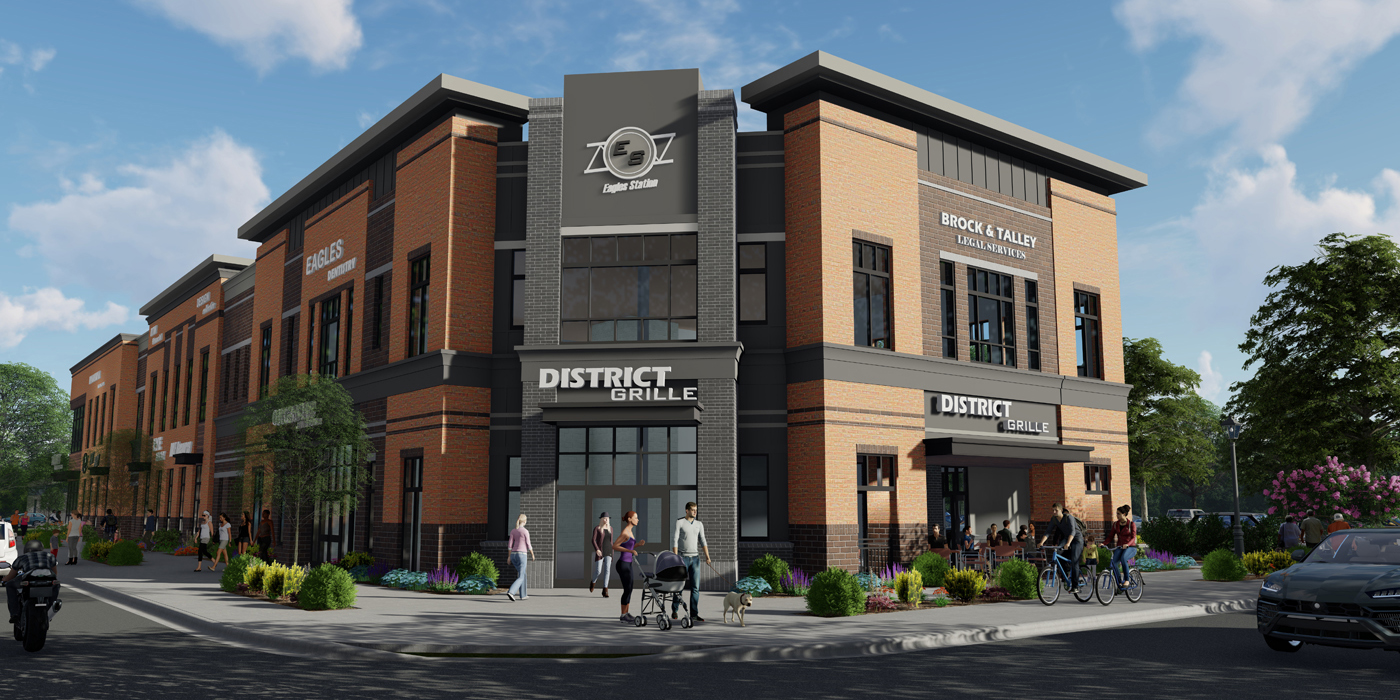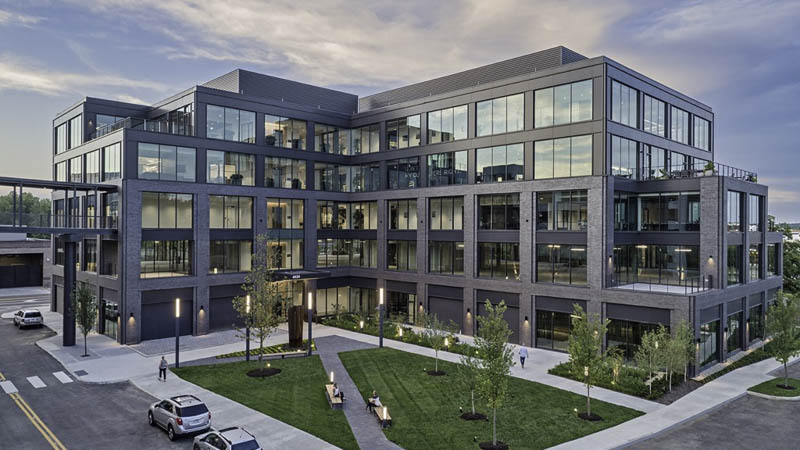Revealing the Comprehensive Solutions Offered by Commercial Architects for Modern Dope
Commercial Architects serve an important feature in contemporary growth jobs. They blend layout looks with performance while sticking to regulative needs. Their know-how extends beyond plain building, incorporating sustainable techniques and innovative innovations. As they navigate complex zoning laws, Architects team up with different stakeholders to bring visions to life. This multifaceted technique elevates questions concerning the progressing role of Architects in shaping modern rooms and the impact of their deal with future developments.
Recognizing the Function of Commercial Architects in Modern Developments
In modern urban landscapes, Commercial Architects play a crucial duty fit practical and visual rooms that meet varied business needs. Their knowledge expands past simple layout; they browse complex zoning laws, constructing codes, and ecological guidelines. By collaborating with clients, they determine certain demands, making certain that each job aligns with the client's vision while likewise thinking about useful elements such as sustainability and cost-effectiveness. Commercial Architects are adept at integrating ingenious innovations and products right into their layouts, enhancing both the performance and power performance of structures. They conduct extensive website evaluations to examine the prospective obstacles and opportunities offered by a place. Furthermore, reliable communication with service providers and various other stakeholders is essential, making certain that the project advances smoothly from conception to conclusion. Ultimately, Commercial Architects are important in producing areas that not only fulfill useful functions but also contribute to the general character and vibrancy of metropolitan environments.
Principle Design: Transforming Ideas Into Truth
Concept layout acts as a vital phase in Commercial architecture, where ingenious layout solutions emerge from innovative brainstorming. This procedure relies on joint ideation, uniting diverse viewpoints to fine-tune and improve initial ideas. As concepts form, they transform from abstract notions into tangible building truths.
Ingenious Design Solutions
Transforming concepts into truth is the hallmark of ingenious style options in Commercial architecture. These remedies mix creative thinking with capability, dealing with the distinct requirements of modern developments. By leveraging advanced modern technologies and sustainable methods, Architects craft rooms that are not just visually enticing however additionally efficient and adaptable. Focus on customer experience drives the style process, ensuring that environments foster performance and cooperation. Each project take advantage of a customized technique, where principles are meticulously created to reflect the customer's vision while taking into consideration future trends. Ingenious layout solutions also focus on adaptability, enabling alterations in time as service needs progress. Ultimately, these strategies boost the total value of Commercial spaces, making them critical in today's competitive landscape.

Collaborative Ideation Process
Collaboration serves as the backbone of the ideation procedure in Commercial design, promoting creative thinking and advancement among diverse stakeholders. Architects, customers, designers, and neighborhood members take part in vibrant conversations, making certain that all perspectives are taken into consideration. This comprehensive strategy enables the exploration of numerous style ideas, encouraging special options that align with the project's vision. Via workshops and brainstorming sessions, concepts develop and fine-tune, changing first principles into concrete designs. Innovation also plays a critical role, with tools such as Structure Info Modeling (BIM) facilitating real-time cooperation and adjustments. Inevitably, this joint ideation process not just improves the layout result but also grows a sense of possession and financial investment among all events involved, bring about effective Commercial developments.
Zoning Evaluation: Navigating Laws and Conformity
As programmers commence on new tasks, comprehending zoning policies is vital to making certain conformity and avoiding pricey hold-ups. Zoning analysis plays an essential function in this procedure, as it involves examining neighborhood zoning regulations that dictate land use, developing elevation, thickness, and setbacks. Commercial Architects have the competence to navigate these intricate policies, assisting customers determine permitted usages and any type of essential differences.
Sustainable Design Practices: Building for the Future
Lasting design techniques are progressively important in the domain of Commercial design, especially as ecological concerns remain to rise. Architects focus on environmentally friendly materials, energy-efficient systems, and design approaches that reduce waste and ecological influence. Incorporating eco-friendly power resources, such as photovoltaic panels and wind generators, enables structures to generate their own power and minimize dependence on fossil fuels.Furthermore, sustainable layout emphasizes the relevance of interior ecological top quality. This consists of utilizing natural light, boosting air flow, and choosing non-toxic materials to enhance occupant health and performance. Environment-friendly roofing systems and living wall surfaces are additionally preferred functions that add to biodiversity and city cooling.Additionally, Commercial Architects often incorporate water conservation strategies, like rainwater harvesting and drought-resistant landscape design. With these ingenious techniques, they create spaces that not just meet modern needs however additionally cultivate a lasting future, addressing the expanding need for responsible growth in the contemporary world.
Task Management: Ensuring Timely and Efficient Implementation
Reliable task administration is vital for ensuring that Commercial architecture tasks are completed on time and within spending plan. This function includes a variety of responsibilities, including the coordination of different stakeholders, timelines, and resources. Commercial Architects utilize their know-how to create thorough job plans that describe important milestones and deliverables, permitting methodical progression tracking.Regular interaction among employee and clients is vital, fostering transparency and promoting timely decision-making. Risk management strategies are also used to recognize potential difficulties early, making it possible for proactive solutions to be developed. By making use of advanced task administration devices, Architects can keep track of task efficiency in Homepage real-time, making adjustments as required to maintain efficiency.
Interior Decoration: Creating Functional and Aesthetic Areas
Inside style plays an essential duty in enhancing both functionality and aesthetics within Commercial rooms. Efficient space planning can enhance operations and improve user experience, while aesthetic design principles add to an aesthetically attractive atmosphere - commercial architects. With each other, these aspects create areas that are not just sensible yet likewise inspiring
Area Planning Efficiency
While maximizing the utility of offered room, Commercial Architects focus on space planning performance to develop both useful and visually pleasing settings. This strategy involves careful evaluation of browse around here the spatial design to ensure excellent use every square foot. Architects think about factors such as operations, access, and natural light to boost functionality. By tactically putting furniture, equipment, and workstations, they facilitate activity and communication among customers, advertising efficiency. Additionally, zoning different locations for specific features aids in handling noise and personal privacy, creating an unified ambience. With efficient room planning, Commercial Architects can transform constraints right into chances, ensuring that each room satisfies the varied requirements of its residents while adhering to regulatory needs and industry standards.
Visual Layout Concepts
Aesthetic design principles play an essential role fit settings that are not just functional however additionally visually enticing. These concepts guide Commercial Architects in producing rooms that resonate with individuals while boosting brand identification. Key components include balance, percentage, and harmony, which interact to produce a cohesive look. Color design and products are thoroughly picked to stimulate wanted emotions and sustain the total theme. In addition, illumination plays a vital role, influencing state of mind and exposure while highlighting building attributes. By incorporating these concepts, Architects ensure that rooms are not only sensible yet also welcoming and motivating. Ultimately, reliable visual layout fosters a positive individual experience, urging interaction and complete satisfaction in Commercial settings.
Collaboration With Stakeholders: Cultivating Successful Collaborations
Successful partnerships in Commercial architecture hinge on effective collaboration with stakeholders, making sure that every voice is heard and valued. This collective strategy entails appealing numerous parties, including clients, professionals, and neighborhood members, throughout the design and development procedure. By fostering open interaction, Commercial Architects can deal with problems, gather understandings, and line up the job's vision with stakeholder expectations.The integration of diverse point of views boosts creative thinking and technology, resulting in even more useful and cosmetically pleasing styles. Routine conferences, comments sessions, and workshops promote this dialogue, enabling Architects to adjust their plans in feedback to stakeholder input. In enhancement, establishing trust fund through openness and responsibility strengthens these partnerships, resulting in a smoother project execution.Ultimately, the success of modern-day developments depends on the Architects' capacity to navigate and integrate varying rate of interests, producing a collaborative environment that promotes shared objectives and mutual success.
Often Asked Questions
Exactly How Do Commercial Architects Handle Budget Plan Constraints During a Task?

What Sorts of Software Application Do Commercial Architects Generally Use?
Commercial Architects commonly make use of software program such as AutoCAD for composing, Revit for Structure Info Modeling, SketchUp for 3D modeling, and job management tools like Microsoft Project to improve partnership and enhance process throughout the style process.
Can Commercial Architects Help With Getting Financing for Projects?
Commercial Architects can assist in my latest blog post getting financing for projects by preparing comprehensive propositions, aiding to verbalize style visions, and supplying financial projections that can boost the possibility of protecting necessary funding from investors or economic institutions.
Just How Do Architects Make Sure Security During the Building Refine?
Architects guarantee safety during construction by implementing rigorous style requirements, collaborating with engineers, carrying out regular site inspections, sticking to local policies, and promoting interaction amongst all stakeholders to minimize dangers and advertise a secure workplace.
What Recurring Support Do Architects Supply After Task Completion?
After job completion, Architects provide recurring support with upkeep assessments, efficiency assessments, and design adjustments. They guarantee buildings satisfy developing needs, address possible issues, and preserve compliance with laws, promoting a long-lasting connection with clients.
Comments on “How commercial architects Bridge Aesthetics and Functionality”